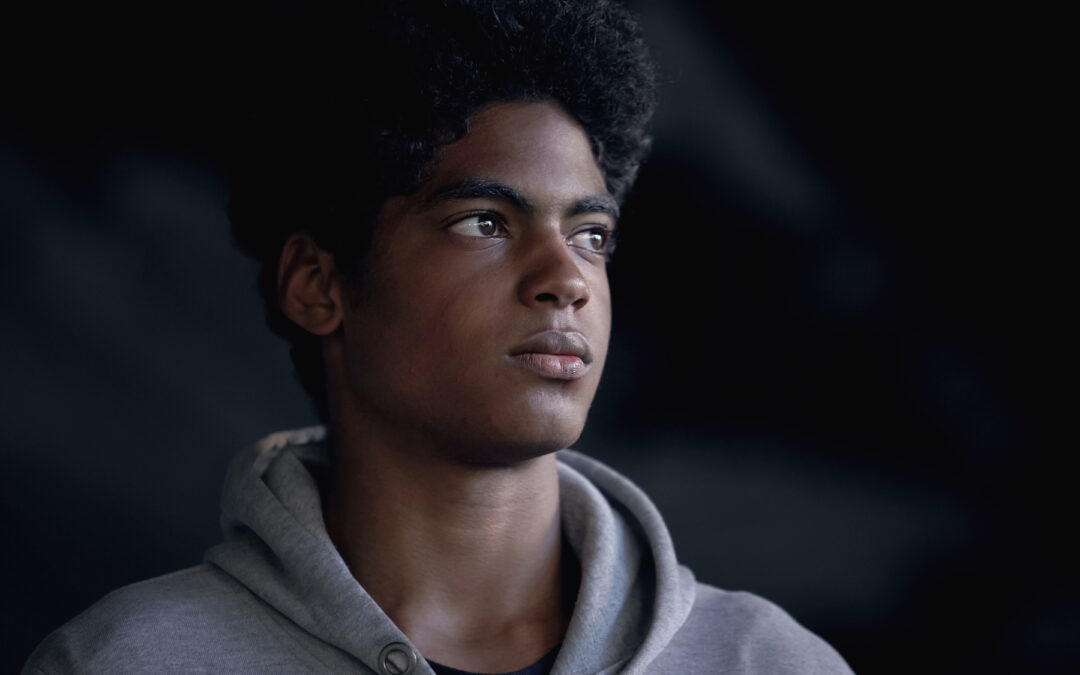In my twenty plus years in education, not a day has gone by where I don’t think about black boys and education. As you may have expected, I’ve been thinking a lot about how they’re making out with learning, and more importantly being, during COVID-19. As an educator and parent, I am hoping to make some connections that make sense for us as we think about the learning needs of our sons and male students and how to engage them during this time.
What I began to think about was how challenging learning about oneself is for a boy while social distancing. Here is a little more of the framework that prompted that thought. The ages of 12–18 are considered by some as the psychosocial stage of development that psychologist Erick Erickson defined as identity versus role confusion. In this stage, teenagers are seeking to find their identity through the lens of gender, education, religion, community, and all other forms of social politics. When they struggle to determine their place in these various aspects of life this is called role confusion. This stage of development is largely rooted in young people searching for their identity aside from what their parents have prescribed for their lives.
Now, how might this be different for boys than girls? As I keep a careful eye on the development of my own daughters during this time, I am able to assess their social emotional health because they have been fairly expressive in communicating their ups and downs, thoughts, and feelings during this pandemic. My wife and I have been intentional about having them take time to do some internal reflection of this moment. We’ve watched movies and given them activities to help them look at the experiences of women in sports, entertainment, and business, explore industries of their choice, as well as virtually tour colleges. Our main goal is keep them healthy, give them some space, but engage them in thinking about their development into womanhood in the future despite the limitations of the present.
For boys, I thought of how much of a challenge it would be to understand their feelings because much of their learning world is largely via external reflection in social and public spaces. Let me explain. What I have learned, as a man and as I research/work with boys, is that much of how they learn is through active engagement, building, and competition yielding wins and losses. The relationships are structured in a way not to express feelings and sentiments toward one another but to mirror or measure themselves against someone else. This identity has been structured through heteronormative gender socialization and active learning is severely compromised due to social distancing.
With all components of social emotional learning, boys depend on cultural capital and the demonstration of that capital to confirm their “success”. In short, cultural capital speaks to the social assets (intellect, dress, skills, talents) that a person has to yield social mobility in society. So, whether it is prowess in sports, one’s public persona, how funny one is, the way they dress, the car they drive, or the person they date can all determine one’s success “as a guy.” When one does not have a social space to attain or highlight that capital, in other words, a successful identity, it leads to role confusion.
For black and brown boys in particular, cultural capital is incredibly important due to other forms of access to social mobility being limited or unavailable. With that, I can’t tell you the number of moms of boys, who are athletes, active learners, and fun loving guys, who have shared with me how agitated and lethargic their sons are as they sit in this confusion of social isolation and distance learning. One mom mentioned a particularly poignant remark. Her son told her that he is no longer going to exercise outside because he is tired of “playing against himself.” This is role confusion.
To help your son or male students to get through this time, we will have to reconsider social emotional learning through new means of framing engagement and socialization. Here are a few considerations.
Number 1: Focus on Identity
Ask them some questions. Who are you? Imagine if sports or active competitive pursuits are gone forever, how do you “do” life differently? Looking into the future, what type of man do you desire to become? Have the teen explore his ethnic and racial identity. For male students of color, encourage readings and videos about others with similar racial and cultural experiences. There is no better time to learn one’s cultural history and how the struggles of the past have provided a space for him in the present. Make it a family experience to engage the learning and what is it that was learned from the person and why.
Number 2: Verbal Expression
Take opportunities to move a teen boy from a physical-spatial thinker to being more verbal-expressive. Find, but dont force, times to talk. Ask open-ended questions that encourage dialogue and thought. One on one may work best but organizing group settings with a coach, mentor, and teammates is also great. The banter amongst boys is essential. If you choose to have a catch or play ball with your son, have him explain why he threw it a certain way or shot from a certain angle. Boys’ minds are more engaged in these active learning moments and they find it easier to verbalize in that space.
Number 3: Competition to Strategy
Play games. This is an easy one, right? The distinction is to find games that have meaning and where winning and losing means something. Allow for video games. This is the one space they have where they get to demonstrate strategy. Consider chess or any activities that allow them to think through problems. Talk trash, many boys love this additional challenge. Have them verbalize their strategy and then speak to why it was successful or not.
Number 4: Create and Build
Boys need opportunities to demonstrate and apply learning. Give tasks and assignments that allow for them to come back and report what they have created. When things are framed as their capital and who can be the best creator during this moment will really resonate with your male students/sons. Have them engage in project based learning and create and record a master class with them teaching someone else their talent. Whether that looks like a song, a video, a physical activity or something one creates in their garage, boys are more likely to engage in an effort to demonstrate their success identity.
Getting male students to rethink learning won’t be easy because our habits and socialization are so normalized. The goal here is to encourage alternate ways of building knowledge. Many teachers and parents are finding success with this approach by teasing out some of these tendencies of boys. And this has benefits for all students cause girls need their learning differentiated as well. If you desire to engage, or keep your teen son/male student engaged, it is important to reframe their thinking about the world from this lens of articulating their strategy for winning and establishing cultural capital. This pandemic and its limitations is taking a toll on all of us. However, for boys who have primarily learned who they are through a reflection and interaction with others, this is our best chance to have them learn aspects of their identity in a “new” way and limit role confusion moving forward.


Recent Comments